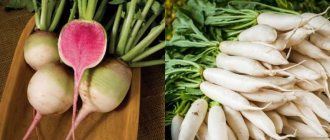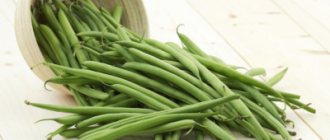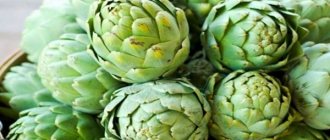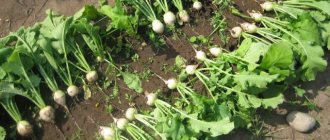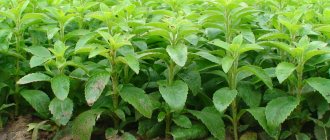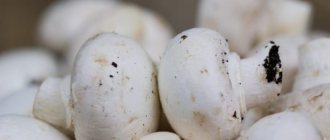The first days of August are an opportunity to plant radishes for the autumn harvest. We have prepared for you the top 20, which contains the best varieties of radish, and for convenience, we divided them by type.
| Type of radish | Name of variety or hybrid |
| Black | Kulata (Semenaoptom) |
| Panther (Semo) | |
| Skvirskaya Black (Satimex) | |
| Green | Margelanskaya (Semenaoptom) |
| Nika (Lucky Seed) | |
| White | Chord (Moravoseed) |
| Astor (Moravoseed) | |
| Mino Early Long White F1 (NongWoo Bio) | |
| Minovaze (Satimex) | |
| Red Meat (Takii Seeds) | |
| Spring Favor F1 (NongWoo Bio) | |
| Titan (Kitano Seeds) | |
| Yapana F1 (Semo) | |
| Red | KS 2078 F1 (Kitano Seeds) |
| Carmina (Semo, Moravoseed) | |
| Ostergrus (Hortus) | |
| For winter storage | Red Meat (Takii Seeds) |
| Black winter (Satimex) | |
| Lutea (Semo) |
Also, separately, you can choose varieties that can be sown right now. More details about each type below.
Description
Companies that breed new varietal forms and sell seeds produce hundreds of them. Now there is a fashion for hybrids, which are distinguished by good commercial qualities: smooth and even root crops, the same size.
Every year new hybrids appear, which should satisfy the need of gardeners for new seeds. People most often buy those that are considered more productive and healthier. But there are many types of radish.
Which one is healthier? This question cannot be answered unambiguously. Each group has its own pros and cons. One contains more essential oils and vitamin C, the other contains B vitamins and proteins. Let's try to understand all the intricacies.
A little history
Radish has been known since time immemorial. Her images were even found on the Cheops pyramid. The ancient Egyptians grew and consumed radish as a natural cure for many diseases. Its pungent taste has been familiar to the Egyptians for at least 4 and a half thousand years. This is how old the famous pyramid is. Most likely, radish served as a good medicine for various diseases.
She was loved more than other vegetables in Ancient Greece
Preference was given to black radish even over carrots and beets, tasty and sweet root vegetables. Radish was worth its weight in gold for its beneficial properties. Even then, it began to be used not only as a supplement or main dish, but also as a medicine.
In all ancient treatises, radish was already mentioned as a remedy for various diseases. Ancient doctors advised using not only root vegetables, but also the oil obtained from the seeds.
In Rus', black radish has been known since time immemorial. She was fed and treated for various diseases. Along with other root vegetables, it was stored until spring and was an indispensable food on fasting days: “The radish came, and horseradish, and the book of Ephraim.” In this way, respect was shown for a vegetable that surpasses others in its benefits: “Radish often cures the plague.”
At that time, ordinary people did not have personal doctors or numerous pharmacies nearby, so much more attention was paid to prevention than to treatment. The special value of radish is that it can be used to prepare delicious savory dishes and at the same time be taken for medicinal purposes. One of them is okroshka, a traditional Russian dish.
Selecting seeds - what to pay attention to
In Russia, both early varieties for summer use and mid- and late-ripening varieties for winter use and storage are grown everywhere. Early ripening takes 55-85 days, late ripening - 100-120 days.
Related article:
Yeast dressing for cucumbers: benefits, recipes
When choosing seeds, take into account the climate of the area, the growing season, the requirements for conditions, and the purpose of cultivation. If spring is prolonged, the soil takes a long time to warm up, and autumn comes early, then late varieties may not ripen before the cold weather, so it is advisable to plant mid-season and early ones. In warm climates, you can sow twice during the season.
Hybrids are more resistant to diseases and adverse weather conditions, but are inferior in taste to varietal root crops.
Types of radish
20 years ago in Russia they knew mainly only black radish . Some people have heard or read about white and green on the pages of “Homestead Farming”. These species were considered exotic. It was considered a great success to order expensive seeds for a lot of money.
Everyone was curious why people in Japan love daikon so much that they pay so much attention to it. And why it is the most popular vegetable. The intrigue was created by the fact that among the inhabitants of Japan, where this root vegetable came from, there are many long-livers and long life expectancy.
In addition, the advertising promised giant root crops from a small seed and record harvests
Allegedly, one daikon can last almost the entire winter. Having tried the foreign miracle, our gardeners were convinced that the harvests were really good, but not such that they could exchange the usual spring radish salad for an overseas root vegetable.
For a long time, green radish and daikon really replaced our compatriot, black radish. And only now fashion is returning to it. It was found that there is no root vegetable (except horseradish) that would be similar in taste and composition to our original Russian type of radish.
It’s not for nothing that they are put on a par with horseradish in terms of their benefits. Although, for example, it is impossible to make a salad from horseradish, but from radish - please. Other types have their own advantages, which will be discussed below.
Agricultural technology
Previously, peasants sowed entire fields of radishes, this suggests that the agricultural technology of the vegetable is extremely simple. Firstly, weeds should not grow in the area allocated for sowing black radish.
The area must be clean; any root crop requires that there are no obstacles to the development of the root system
Otherwise, the fruits turn out crooked and curved, as the root “looks” for free space in the ground. It is better if vegetables have already grown on it the previous year.
The most successful predecessors for radishes will be:
- potato
- all pumpkin (zucchini, cucumbers, pumpkin)
- tomatoes
- onion
- greens: dill, cilantro, parsley
- beans
The most undesirable predecessors are representatives of the cabbage family: all types of cabbage, turnips, radishes. In this case, pests and diseases characteristic of these crops remain in the soil. “Relatives” are best planted in the same bed after 2-3 years.
It is good if mature humus or compost is added before digging, and also if manure was applied to the vegetables last season.
But under no circumstances should radish beds be fertilized with fresh manure.
Black radish loves loose, light, pH neutral soil. The bed needs to be dug up 2-3 times, all weeds must be removed and loosened with a rake. After this, the prepared soil is left to “rest” and settle a little. This usually takes at least a day.
Next, the algorithm for planting black radish seeds is as follows:
- Sowing is carried out from May to July.
- Late sowing is done for vegetables intended for storage.
- To make it convenient, make grooves 3 cm deep with a handy tool (for example, a rod).
- The distance between the furrows is maintained at least 30-40 cm. You can do less, but in this case it will be inconvenient to loosen the bed.
- First, spill the soil, then lay out the seeds at a distance of 8-12 cm from each other.
- The seeds are sprinkled with loose and dry soil. If it’s cold outside, you can lay a film on top for the first time until the shoots sprout.
- The seedlings hatch in about a week.
- As soon as the seedlings grow a little, they are thinned out, leaving at least 15 cm between plants.
- There is no need to make too large a distance; the plants begin to develop poorly. You can plant fast-growing lettuce and radishes in the rows.
- For prevention and in order to get rid of pests, young and mature crops are treated with a mixture of ash and tobacco dust, sold in hardware stores. They are mixed in a 1:1 ratio by volume.
- Radishes are harvested as they ripen.
Red
Red radish is distinguished by the color of its skin. Outwardly, it is very similar to radishes - smooth, round or elongated, white inside, but red radishes are stored much longer than radishes. The pungency of taste is weak, the flesh is juicy.
Varietal features:
- cold-resistant and unpretentious (germinates even at -5 degrees);
- Neutral fertilized soil is better suited;
- loves moisture, but overwatering spoils the taste;
- mid-season variety, ripens in 60-80 days;
- fruits grow up to 200-300 grams;
- if collected before frost, it is stored well (planted for storage in the first ten days of July).
The most famous varieties of red radish include:
- "Wurzburg" (with large raspberry-colored fruits, stores well).
- “Red Giant” (oblong shape, length 12-13 cm, winter variety, stores well).
- “Dahongpao” (from Chinese “big red dress”, round fruits, up to 10-12 cm in diameter, summer variety).
- “Vavalyan” (from Chinese “child’s face”, red fruit with a white tip, summer variety).
Below is a visual video about red radish:
Green
Green radishes are not as common as black or white radishes. In vain, since its benefits have been proven by scientists, and its attractive appearance will add variety to the everyday table. Salads containing white, green and red varieties of radish look very picturesque.
It was bred in Uzbekistan, but feels great in the middle zone.
Its taste is much more delicate than that of black radish, with a pleasant pungency that is inherent in all root vegetables of this type
She's very helpful. It contains amino acids, phytocindes, antioxidants, potassium, phosphorus, other minerals, as well as a complex of vitamins.
The essential oil contained in green radish fruits helps maintain health during epidemics. It strengthens weakened immunity and a person who constantly consumes green radish has no reason to consult a doctor. For colds, it is recommended to eat a salad made from fresh root vegetables at least once a day.
Green radish helps restore gastric motility, constipation, and also improves intestinal function . The bactericidal properties of this vegetable have been known for a long time. It is useful for putrefactive fermentations, as it destroys dangerous microbes and bacteria.
Scientists have proven a positive effect on blood vessels. It reduces cholesterol levels and gently cleanses blood vessels. But the use of green radish should be agreed with a doctor for inflammatory processes, gastritis, and ulcers.
The choice of varieties of this species is not so wide, but is still diverse:
Green goddess
Green goddess
Green goddess
- This is a new variety with a bright taste and beautiful crispy flesh.
- The variety is early ripening, but stores well.
Southerner
Southerner
Southerner
- Late-ripening variety, not prone to flowering. It has light green flesh and weighs from 200 to 300g.
- Can be stored until spring or more.
Margelanskaya
Margelanskaya
Margelanskaya
- A well-known early-ripening variety of green radish. It keeps very well until the next harvest due to its thick peel.
- The flesh of the Margelan variety is green, tender, and has a semi-sharp taste.
Green radish contains a lot of fiber, which helps improve intestinal function. The unique composition of green radish promotes both weight loss and obesity, and vice versa.
If you have problems with appetite, you need to eat vegetables that stimulate it. Usually these are those products that contain natural bitterness. These include green radish.
Biological features
Representatives of the genus Radish (Raphanus) from the Brassica family are divided into wild and cultivated species. Radish (Raphanus sativus) is grown in vegetable gardens; it is also called “Garden radish”. In everyday life, the word “radish” is used to describe plants of this particular species; other varieties have their own names: loba, daikon, radish.
Related article:
Using fallen leaves for garlic
The vegetable is grown as an annual (summer) and biennial (winter) crop. In the first year of life, a shortened stem, a rosette of large dissected pubescent leaves, and a round or elongated root crop are formed. The peduncle grows the next year, but with early sowing it can grow in the first year. Its stem branches and reaches 1.6-2.0 m in height.
The ripening of seeds in the fruit-pod begins 100-120 days after planting the root crop in the ground. The seeds are round, smaller than those of radishes; they can only be extracted by threshing - the pod will not open on its own.
The root, rod-shaped at the beginning of growth, gradually thickens, the soft, delicate shell “sheds,” becomes coarser, becomes dense, protecting the fruit from cracking. The juicy pulp of winter varieties has a sharper taste. Depending on the variety, the skin color of radishes can be white, black, grayish-white, purple, yellow, or green.
Beneficial features
The beneficial properties of radish are beyond any doubt.
This is evidenced by the centuries-old practical experience of entire nations, the conclusions of scientists and the knowledge of doctors. Radish is different from other vegetables, it contains 8 essential amino acids and a large list of minerals, almost the periodic table.
Below is a list that displays the percentage ratio of 100g of radish to the daily requirement of a particular element:
- silicon - 131%
- rubidium - 129%
- vanadium - 118%
- boron - 41%
- cobalt - 40%
- potassium - 28%
- sulfur - 24%
- calcium - 24%
- molybdenum - 22%
- lithium - 17%
- chlorine - 11%
Radish contains the following vitamins:
- Riboflavin (vitamin B2). It improves vision and skin color, and has a gentle effect on intestinal function. If there is a lack of consumption of this vitamin, gastrointestinal disorders occur. When taken orally, it helps heal small wounds.
- Thiamine (vitamin B1). Like all B vitamins, this vitamin is needed to maintain the functioning of the nervous system. It also helps fight insomnia, as it strengthens the body and successfully fights stress. It plays an important role in metabolism.
- Ascorbic acid. It is a strong antioxidant that affects the cells of our body, slowing down the aging process. Helps the functioning of bone and connective tissue.
- Alpha tocopherol. It is an antioxidant, immunomodulator and antihypoxic agent. Scientists have found that this substance is especially needed by pregnant women and children.
- Pyridoxine. Contained in small doses in radish, it is a form of vitamin B6. Pyridoxine is involved in the functioning of the nervous system. In its absence, increased fatigue and depression are noted. It is also involved in blood circulation processes.
If we consider the types of radish as a whole, it turns out that the composition is approximately the same, but the different content of bitterness and essential oils forces everyone to choose what they like best. Some choose it more vigorously, others choose it sweeter, depending on who you like.
Pink
Pink radish is distinguished by its large fruit size, weighing up to 300-350 grams. Most often round, cylindrical is also found (considered a type of lobo). Pink outside and inside. The taste is juicy, soft, slightly spicy. One of the popular varieties is “Daikon Misato”.
Varietal features:
- planted with seeds in open ground in early spring;
- needs long daylight hours;
- it is unpretentious to the soil, but neutrally acidic soil is better suited;
- due to the size of the fruits, they are planted at a distance of 20-30 cm, between rows - about 50 cm;
- requires soil loosening and hilling;
- loves moisture, if there is not enough it will taste bitter;
- does not keep for long.
We invite you to watch a visual video about the Daikon Misato Pink Shine radish:
Contraindications
Many diseases are cured by the radish itself and its juice.
But this is by no means a panacea. And this miracle vegetable has contraindications.
Negatives
- with increased stomach acidity
- for peptic ulcers of the stomach and duodenum
- inflammatory kidney diseases
- for heart defects and other diseases
In addition, you need to be careful in the following cases:
- for children under 3 years old
- radish allergies
- during pregnancy
- when feeding
There is no need to completely abandon treatment or prevention. But it is better to start introducing a new product, especially to children, in small portions. In this case, you can immediately see if there is a deterioration.
Even a healthy person should not overuse radish and dishes made from it. If you want to improve your diet and introduce radish into it on an ongoing basis, then you need to do this gradually.
VIDEO: How to treat a cough? Black radish with honey
Where and for how much can I buy seeding material?
Modern gardening and gardening stores provide their customers with a huge assortment of varietal and hybrid radish seeds, and qualified staff will help you choose a crop that meets the buyer’s requirements.
As for residents of the capital and St. Petersburg, they are given the opportunity to place an order to purchase seeds without leaving their home. Online trading centers (SEMENAPOST, LEROY MERLIN, AGRO SOS, etc.) offer not only mail delivery, but also urgent home delivery.
As for prices, it depends on what kind of purchase you plan to make. Retail and wholesale prices differ significantly. For example, a package of seeds weighing 1 kg costs from 1,500 to 4,000 rubles. It all depends on the variety and its characteristics. As for seeds for home gardening, the price of a bag of black radish seeds starts from 6 rubles and above, a standard bag of daikon seeds costs from 16 rubles and above. So buying a new variety will not require large expenses.
When choosing a radish variety and regardless of the growing method, it is necessary to observe planting dates. Correct planting time is one of the factors ensuring high yields.


